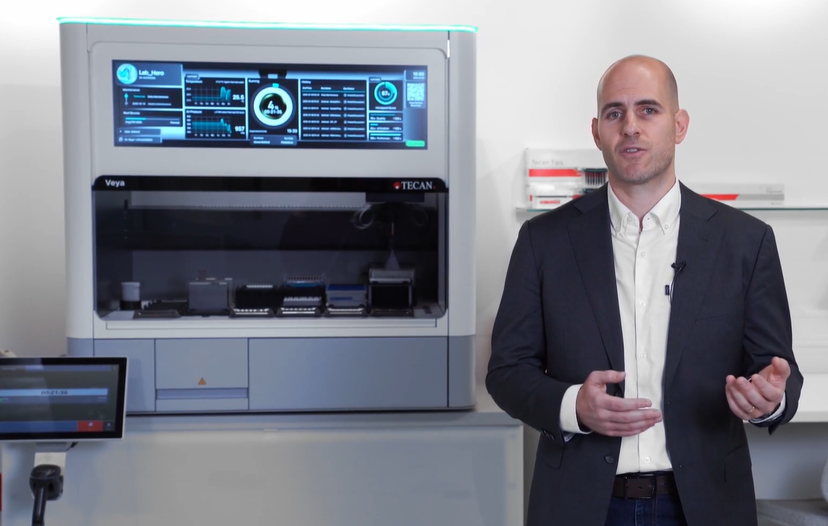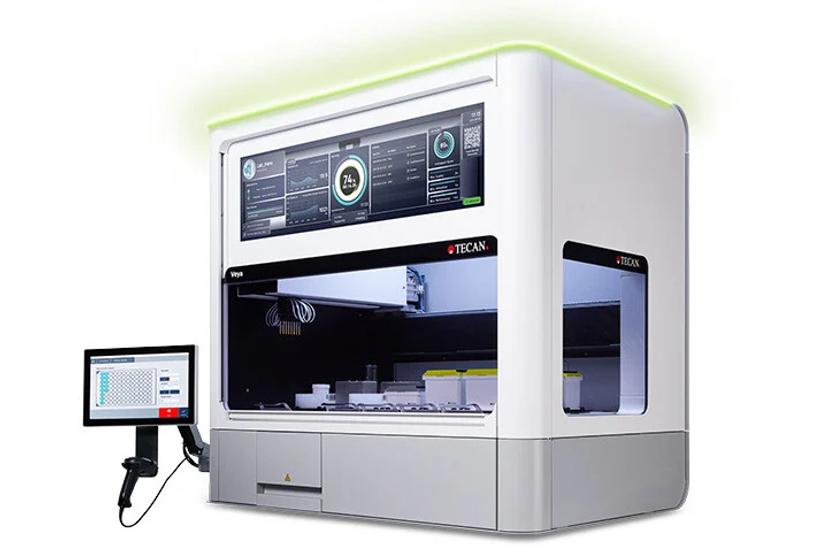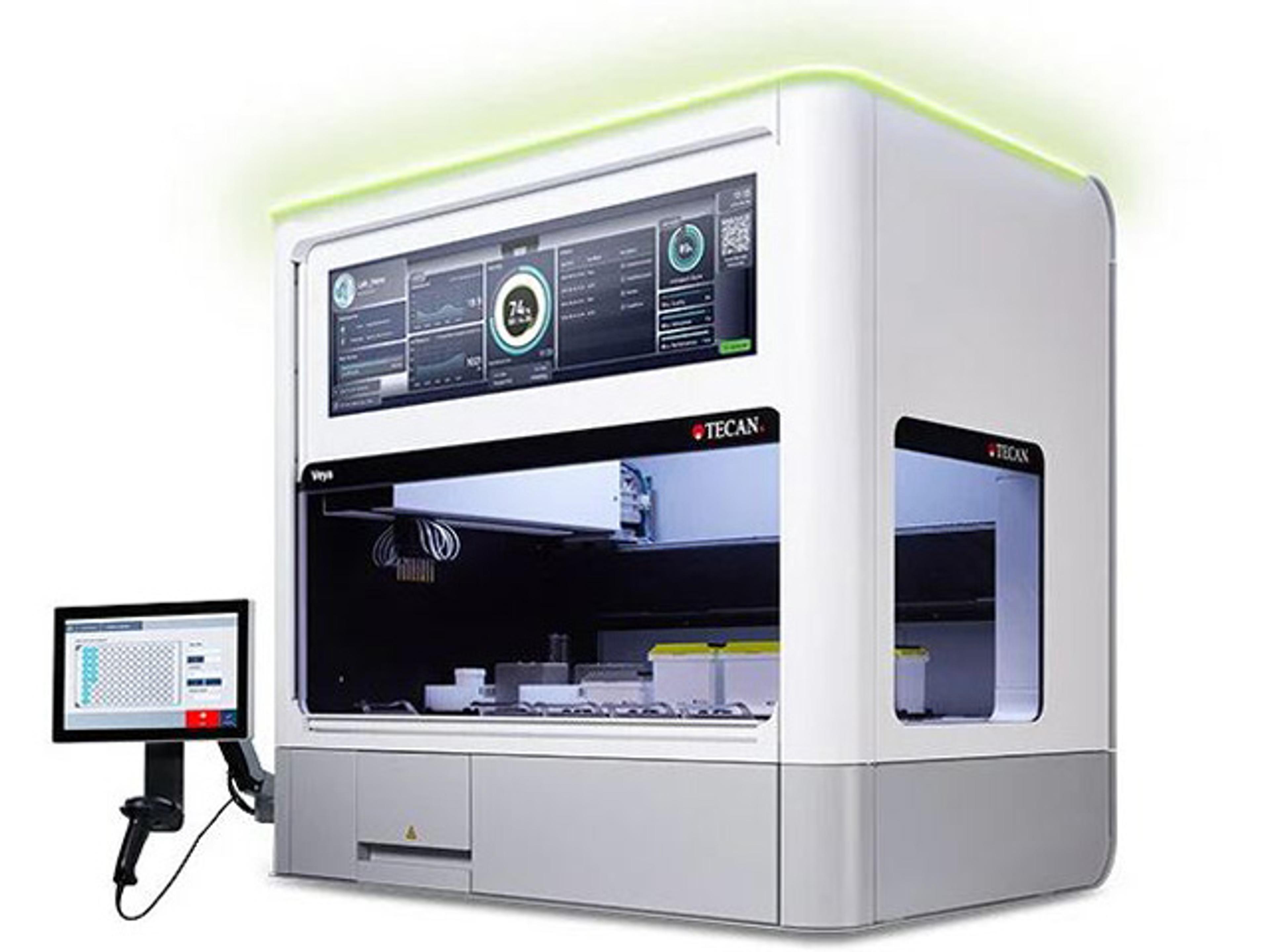How Tecan’s Veya is bringing effortless automation to multiomics
With intuitive workflows, quick setup, and expert support, Veya is making automation accessible and cost-effective for first-time users
18 Jul 2025

Rémi Magnan, Vice President of Application Solutions and Innovation at Tecan, introduces Veya™, its new automated liquid handling solution
Rapid advancements in laboratory automation have transformed the life sciences landscape, increasing productivity and throughput while reducing human error. However, many labs still struggle with the complexity and costs of adopting automation.
Veya®, Tecan’s new automated liquid handling solution, aims to simplify this transition, offering easy setup, intuitive workflows, and seamless integration for labs new to automation. Speaking with Dr Rémi Magnan, Vice President of Application Solutions and Innovation at Tecan, SelectScience® reveals how Veya can deliver 'effortless automation' for multiomics workflows and how Tecan is helping labs to de-risk the move to automation.
Breaking down barriers to automation
According to Magnan, one of the most common challenges for labs new to automation is the need for a dedicated expert to manage setup and protocol creation. “Most labs rely heavily on a few ‘power users’ who understand the system and onboard the rest of the team,” he says. “This creates a bottleneck, as other users often depend on those experts to run workflows. For automation to be accessible, the system must hide complexity in the backend and offer a simple, intuitive interface that anyone can use confidently.”
“There are two main trends in the automation space: on one end, advanced users – often in pharma and biotech – who want fully flexible platforms they can program and integrate independently,” he continues. “On the other, and increasingly common, are labs with minimal automation experience that simply need tools that are easy to adopt and operate.”
Veya was created with this second group in mind: the growing number of labs looking to automate but struggling with setup complexity and usability. “Those are the key barriers,” Magnan notes, “So if you remove those, it helps to democratize the adoption of automation – which was the intent with Veya.”
What makes Veya different?

Veya is designed to make automation as simple as possible for labs at every step on the user journey. This starts with a built in computer for simplified installation and pre-loaded application protocols to shorten the time to the customer running protocols *.
To reduce reliance on ‘power users,’ Veya offers intuitive tools such as the Touch Tool, which provides step-by-step guidance for users during assay execution. This feature helps walk even inexperienced users through each stage of the workflow – with visual aids like pictures or videos of the instrument deck – making it easy to follow protocols. “This ensures that anyone in the lab can confidently run assays, not just an automation expert,” says Magnan.
“Then we have several systems that are geared towards catching errors,” he adds. “Essentially, two important technologies help to do this: DeckCheck and PMPTM AI.”
DeckCheck uses AI-based image recognition to compare the user’s worktable to a reference image, flagging any differences before the experiment begins. “About 70 to 80% of errors are still loading errors,” Magnan notes. “PMP AI, on the other hand, monitors pipetting signals for issues like clogs or interference from abnormal sample patterns, ensuring potential problems are caught before they affect the experiment.”
Finally, Veya’s software integrates Smart Commands which simplifies the protocol creation process. “A smart command turns what would be hundreds of lines of code into a single command with a simplified visual interface where people can select options based on what they need for their application,” Magnan explains. “We have formalized several applications like this, and we continually improve and add new ones. This makes complicated protocol creation work very easy, which has proven to be very popular with our users.” With these combined features, Veya makes it possible for labs with little automation experience to start running complex workflows with ease, minimizing errors and simplifying the automation process from setup to execution.
Future proofing and reducing the cost of ownership
Labs new to automation often overlook long-term considerations like upgradability or total cost of ownership. “While many new users focus only on upfront costs, they often overlook how their needs might change over the next few years, whether that’s updating protocols or shifting entirely to new applications,” explains Magnan. “There’s often little awareness around ensuring the platform is flexible, expandable, or futureproof.”
For this reason, Tecan designs its automation platforms to be highly flexible and upgradable, helping labs protect their investment over time. “You can upgrade regardless of the configuration that you start with, so that's a big plus in terms of making them future-proof and reducing the cost of ownership,” Magnan explains.
Another consideration when adopting automation is consumable use. While service contracts are typically straightforward, ongoing consumable costs – particularly tip usage – can be difficult for research labs to estimate. As Magnan notes, many labs do not yet know the frequency or scale of their experiments, making it hard to predict annual usage. “Best case scenario, they can calculate consumption per assay, but many don’t know how often they’ll run those assays weekly or monthly so that can be a tough one,” he explains.
To support this need for visibility, Tecan has integrated digital tools directly into its platforms, helping users understand and manage consumable usage. For example, Veya includes a software feature called IntrospectTM, which gives users clear insights into tip consumption by assay. “That gives the customer real-time feedback on how many tips are being used for a particular assay, or the amount of tips used per day or per week.”
By making this data visible and actionable through an intuitive interface, Tecan makes it easier for new users to anticipate consumable costs and manage total cost of ownership, even when variables are still taking shape. And for labs with clearer usage patterns, this not only allows for more accurate budgeting and supply chain planning but also opens the door to volume-based pricing.
“While many new users focus only on upfront costs, they often overlook how their needs might change over the next few years, whether that’s updating protocols or shifting entirely to new applications.”
Dr. Rémi Magnan, Vice President of Application Solutions and Innovation at Tecan
Keeping things running
In addition to its streamlined setup, Tecan provides continuous technical support and comprehensive maintenance for Veya. “We have a remote diagnostic tool, so are able to remotely triage the instruments, and we provide that as part of our service contract,” Magnan explains. Veya’s display interface, called OneViewTM, also provides real-time data on system status, including system care and environmental status, real-time run status and history of last runs, and direct access to Tecan’s self-help knowledge portal, available 24 hours a day.
In terms of hardware maintenance, Magnan highlights Veya’s Air Restriction Pipetting (ARP) TechnologyTM. “This is plunger-free, which means it requires very little upkeep compared to traditional technologies,” he says. “This reduces the need for extensive maintenance and keeps downtime minimal for our team and our customers.”
Early success
Early adopters are already leveraging Veya’s potential, with a standout example being the Bogdan Budnik lab at Harvard's Wyss Institute, which focuses on single-cell workflows in proteomics, metabolomics, and lipidomics. Here, the installation of the instrument was completed in just one day, and they were up and running a few days later. “They run advanced multiomics workflows, and some of these assays, to do manually, were close to impossible,” says Magnan. “Now, with Veya, they’re able to run those experiments.”
Veya has now been deployed in multiple locations with similar success . “The installation has always been done in a pretty flawless fashion, and simply put, Veya has allowed labs to do what they were not able to do before,” he adds.
Where to start
For labs hesitant about adopting automation for the first time, Magnan advises that they should start by reaching out to teams like Tecan that specialize in automation. “We’ve been helping labs with their automation journey for over 40 years,” he says, “We have all sorts of capabilities in-house, including our application lab here in the Zurich area.”
He reiterates that it is not just about the installation but about considering the total cost of ownership, service, and long-term partnership. Here, Tecan’s consultative approach is key. “We work closely with our customers, showing them how automation works in real-world settings, including visits to labs with existing automation, and working together to de-risk their automation projects so they’re sure the technology will meet their needs,” he says.
This includes helping customers to define workflows, translate them into consumable needs, and plan for volume more effectively. “This ensures labs have all the information they need, and it helps us make automation a part of their operations in a more efficient and sustainable way . It’s a win-win,” he concludes.
*Protocols need to be validated by the user.

